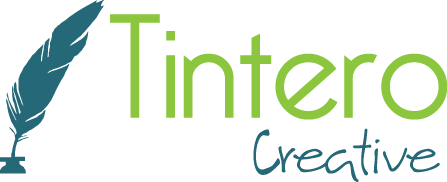Top 3 Best Practices for Stronger Organic Traffic
Ranking in the top Google search results is incredibly important. If you aren’t on the first page, your website might as well be invisible. We know that getting seen in a crowded field is half of the marketing battle!
Fortunately, you don’t always have to pay to get into Google’s top 10. There are several SEO strategies you can use to help increase organic traffic to your site. However, it is key that you get it right, or you won’t make much of a difference in your ranking.
Here are our top 3 SEO tips to improve your organic marketing game.
Before You Get Started: Do Your Research
Keywords and key phrases are the foundation of SEO. They serve two purposes. The first is that they inform search engines, like Google, what your site is about. This leads to the second purpose, which is that they help people find you in online searches. For example, if someone is looking to hire a marketing firm, they might search “marketing firm near me” on Google. The more you have these words or phrases in your site copy and metadata, the higher your search engine rating will be.
To make the most out of these keywords and phrases, you not only want to use them as much as possible, but also make them as relevant as possible. So a marketing firm doesn’t just want to include “marketing firm in Colorado” but also keywords and phrases such as “social media marketing,” “marketing firm for small business,” and “email marketing firm” as other key phrases.
If you don’t know what people are searching for online, you won’t know what keywords and phrases to use on your site; that is why you should always start with some research. Typing a keyword or phrase into Google will give you some ideas on additional phrases as the auto fill bar populates the most searched key phrases, but using an SEO tool, such as SEMRush, can really help you drill down on some of those related topics.
1 | Align of the Times: Align Your Content
Now that you are armed with keyword research, you’ll need to align your content with user intent. There is a purpose behind every search query and your content should satisfy one or more intent. There is a big difference in intent between “make curry sauce” and “buy curry sauce.” It is this intent that you need to keep in mind when crafting your content.
The four common types of search intent include:
- Informational: when a user is looking for specific information, for example, how-tos
- Navigational: when a user is looking for a specific website or app, like when a user searches “Amazon” to get to the Amazon home page
- Commercial: when the user is looking to inform their decision about a future purchase, like searching for “best TV”
- Transactional: when the user is ready to buy, like when they search “buy TV”
Remember, it’s really important to note the difference between commercial and transactional. If someone is searching for “the best of…” there is no point in optimizing your product landing page with that phrase. These users are looking for information on product options, not looking to purchase!
2 | That’s so Meta: Write a Compelling Title and Meta Description
The most important elements on your page are the title and meta descriptions. According to Google, the title tag is critical in giving users quick insight into the content of the result and why it’s relevant to their search. In fact, it’s often the primary deciding factor if the user decides to click on the search result.
Google typically displays the first 50 to 60 characters of a title, so you’ll want to keep your title tag under 60 characters. Also, make sure to include your target keywords and to write a title that matches the search intent. Make sure that it is consistent and concise.
A meta description is a brief summary of a page in the search engine results page (SERP). It is the text displayed below the title tag. While meta descriptions do not directly impact your search ranking, it can influence click-through rates.
Keep your summary accurate but to 160 characters or less. Be sure that each meta description is unique for each page while matching search intent. Also, use action-oriented copy that encourages users to click.
3 | Operation Optimize: Optimize Your Images
You probably know how important images are in the overall experience of visitors on your site. In fact, you probably spend a lot of time selecting the right images, but you should spend as much time optimizing them too.
Site speed is important in ranking, so choosing the right file format and size is critical. Two of the most common formats are jpg, which are best suited for photos, and png, which is best for text and illustrations. You might also need to compress your image if it is large.
You also want to rename your images to include keywords. For example, “oatmeal-cookie-recipe.jpg” is much more informative to search engines than “IMG059.jpg.” Adding alt text to your images on your site can also amp up your SEO ranking.
Final Thoughts
By optimizing your content around keywords and phrases, you can increase your search rankings, which can lead to more clicks. But remember, audience needs will change over time, so if you find you just aren’t getting the results you want anymore, you can always update your content to meet those new needs or keywords–when relevant!
